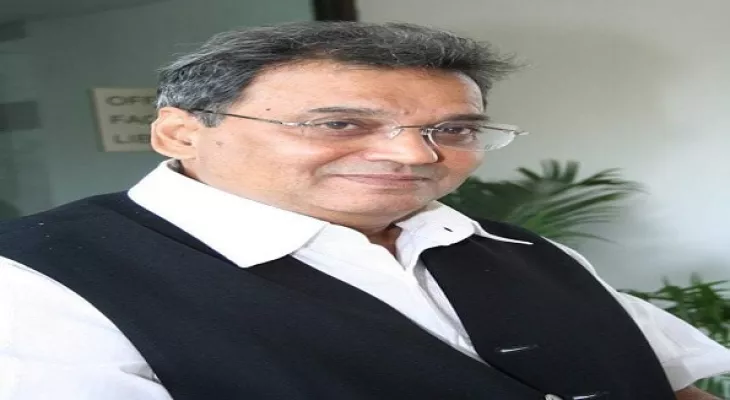Dilip Ku at 100 : What A Life! What A career spanning 55 years, 57 movies, 65 per cent success rate

Mumbai, Dec 11 : Yusuf Khan, alias Dilip Kumar — the intense, multi-faceted actor who rose to be not just a superstar but a supergiantstar — and inspired generations of future actors and filmmakers with the art and science of his acting talents, remains glowing brightly in the starry film galaxy.
On his 100th birth anniversary on Sunday (he was born on December 11, 1922), here’s a quick view of a few of his top, timeless, superhit films which still enthrall movie buffs, now mostly on the small screen.
In his acting career spanning 55 years, Dilip Kumar performed in an estimated 57 films with an awesome success rate of around 65 per cent.
The eternal mega-blockbuster was, of course, “Mughal-E-Azam” (1960), directed by the legendary Asif Karim (better known as K. Asif), which shattered records and created new ones, many which still stand unbroken today.
In the film, Dilip Kumar essayed the role of a bohemian Prince Salim, who later became fourth Mughal Emperor Jahangir, the son of the no-nonsense Emperor Akbar (Prithviraj Kapoor) and the doting mom, but a ‘pati-vrata’ Queen Jodha (Durga Khote).
The compelling storyline, the grandeur of the sets, the powerful and memorable dialogues, the immortal music by Naushad, or the lingering scenes … like the Emperor Akbar’s heart-wrenching plea to his wayward son – “Saliiiiiim…!” to wean him away from the ever-ravishing ‘kaneez’ Nadira Begum alias Anarkali (Madhubala), and others still resound in public memory.
“Mughal-E-Azam” became the first Indian film to be digitally coloured and re-released in 2004, and again proved a superhit, something unprecedented in Indian film history.
In fact, the last surviving link – of all the people who contributed to the making of the successful epic “Mughal-E-Azam” — Lata Mangeshkar, passed away in February 2022 — just eight months after Dilip Kumar.
Then came “Ganga Jamna” (1961), the story of two brothers, one a dacoit (Dilip Kumar as ‘Ganga’) and the other a cop (‘Jamna’, his real-life brother Nasir Khan), along with the Vyjayanthimala, and superhit music by Naushad.
The story of the exploits of the dacoit and his conflicts with his policeman brother or his flings with the loyal Dhanno (Vyjayanthimala), the dialogues in rustic Awadhi, the Naushad compositions like “Nain Lad Jaihe To Manva Ma Kasak Hoe Kari” (Mohammed Rafi), and “Do Hanson Ka Joda” (Lata Mangeshkar), found universal takers.
A trend-setter in many departments, “Ganga Jamna” later served as food for thought to inspire a series of ‘brother-hood’ films like Yash Chopra’s “Deewar” (1975), Manmohan Desai’s “Amar Akbar Anthony” ((1977), and many others.
Another Dilip Kumar-starrer in Mehboob Khan’s love-triangle, “Andaz” (1949) with Nargis and the legendary Raj Kapoor, remains fresh in public memory.
The engaging story revolved around the ordinary man Dilip Kumar’s childhood sweetheart who grows into a wealthy and comely Nargis but due to circumstances he cannot declare his love for her.
Later, she marries elite Raj Kapoor, who wrongly suspects her of having an affair with Dilip Kumar and after a chain of events, Nargis kills Dilip Kumar, goes to jail, leaving her husband repenting after he realises his monumental blunder.
Its blockbuster music under Naushad’s baton yielded evergreen numbers like “Jhum Jhum Ke, Naacho Aaj”, “Tu Kahe Agar…” (Mukesh), “Uthaye Ja Unke Sitam” (Lata Mangeshkar), or “Yun To Aapas Mein Bigadte Hain” (Lata, Rafi).
B.R. Chopra’s “Naya Daur” (1957) remains etched in public memory for a variety of reasons, the first ever film to speak of conflict between humans and technology, with Dilip Kumar, his buddy Hamid Ali Khan, or Ajit, and their common love-interest Vyjayanthimala.
The story of their deep friendship turning into bitter enmity, leading the embittered Ajit to plot Dilip Kumar’s murder as he won over the village beauty, but finally all misunderstandings are cleared and they reunite as old friends.
The film, later re-released (2007) in a digitalised colour version, was punctuated with O.P. Nayyar’s mega-hit numbers like “Maang Ke Saath Tumhara” (Rafi, Asha Bhosle), “Reshmi Salwar, Kurta Jaali Ka” (Asha, Shamshad Begum), and “Yeh Desh Hai Veer Jawanon Ka…” (Rafi, S. Balbir).
Mehboob Khan made the first Indian adventure film, “Aan” (1952) which was also the country’s maiden technicolour feature film, starring Dilip Kumar, Nimmi Bano and Nadira, that was to be a trendsetter in many aspects in future.
The grand and most expensive film made (Rs.3.50 million budget) at that time clicked and it became one of the all-time highest grossers, and was released in around 28 countries under the name of “The Savage Princess”, earning global accolades.
Naushad came up with a super-memorable score with songs like “Dil Me Chhupake Pyar Ka Toofan” or “Maan Mera Ehsaan, Are Naadan” (Rafi), and others sung by Lata and Shamshad Begum.
Other major films of that time featuring Dilip Kumar include: “Jugnu” (1947), which first drew the world’s attention to his acting and personae, with the singer-actress Noorjehan, who remained his lifelong friend; “Mela” (1948) with Nargis and Noorjehan, ending with the tragic love-story ending in the death of both the protagonists, and spurred many similar films later.
In Ramesh Saigal’s “Shaheed” (1948), Dilip Kumar was paired as a freedom-fighter with Kamini Kaushal, with several blockbuster songs composed by another musical master of the era, Ghulam Haider; S.S. Vasan’s “Insaniyat” (1955) along with Bina Rai and Dev Anand, and C. Ramchandra composed a staggering 17 songs, many of them big hits.






